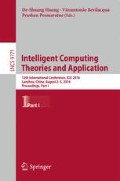Abstract
In the endosymbiont hypothesis, the host cell was initially believed to have developed a nucleus and other major characteristics of a eukaryotic cell before taking in the bacteria which in time became mitochondria. This explanation is mainly grounded on existence of early-branching lineages of eukaryote that lack mitochondria. However, an alternative view has gained more support after evolutionary remnants of mitochondria were found in these organisms, where the host cell was yet to evolve the intricacy of eukaryote when the endosymbiosis first began. In this research, we examined the amino acid sequences of mitochondrial Hsp70 found in Giardia intestinalis, Trichomonas vaginalis, and Vairimorpha necatrix from each of the three major amitochondriate lineages. Analyzing the sequences with apriori and decision tree algorithm, we will compare the data with the sequence of the mitochondriate Mus musculus, and therefore provide grounds to evaluate the scenarios of endosymbiosis.
Access this chapter
Tax calculation will be finalised at checkout
Purchases are for personal use only
References
Mereschkowsky, C.: Über natur und ursprung der chromatophoren im pflanzenreiche (1905)
Sagan, L.: On the origin of mitosing cells. J. Theoret. Biol. 14(3), 225–IN6 (1967)
Cavalier-Smith, T.: A 6-kingdom classification and a unified phylogeny. In: Endocytobiology II, pp. 1027–1034 (1983)
Cavalier-Smith, T.: Kingdom protozoa and its 18 phyla. Microbiol. Rev. 57(4), 953–994 (1993)
Hirt, R.P., et al.: Microsporidia are related to Fungi: evidence from the largest subunit of RNA polymerase II and other proteins. Proc. Nat. Acad. Sci. 96(2), 580–585 (1999)
Keeling, P.J., Luker, M.A., Palmer, J.D.: Evidence from beta-tubulin phylogeny that microsporidia evolved from within the fungi. Mol. Biol. Evol. 17(1), 23–31 (2000)
Philippe, H.: Early–branching or fast–evolving eukaryotes? An answer based on slowly evolving positions. Proc. Roy. Soc. Lond. B: Biolog. Sci. 267(1449), 1213–1221 (2000)
Keeling, M.J., Eames, K.T.: Networks and epidemic models. J. Roy. Soc. Interface 2(4), 295–307 (2005)
Koonin, E.V.: The origin and early evolution of eukaryotes in the light of phylogenomics. Genome Biol. 11(5), 209 (2010)
Embley, T.M., Hirt, R.P.: Early branching eukaryotes? Curr. Opin. Genet. Dev. 8(6), 624–629 (1998)
Müller, M., Lindmark, D.G.: Respiration of hydrogenosomes of Tritrichomonas foetus. II. Effect of CoA on pyruvate oxidation. J. Biolog. Chem. 253(4), 1215–1218 (1978)
Tovar, J., Fischer, A., Clark, C.G.: The mitosome, a novel organelle related to mitochondria in the amitochondrial parasite Entamoeba histolytica. Mol. Microbiol. 32(5), 1013–1021 (1999)
Bui, E.T., Bradley, P.J., Johnson, P.J.: A common evolutionary origin for mitochondria and hydrogenosomes. Proc. Nat. Acad. Sci. 93(18), 9651–9656 (1996)
Germot, A., Philippe, H., Le Guyader, H.: Presence of a mitochondrial-type 70-kDa heat shock protein in Trichomonas vaginalis suggests a very early mitochondrial endosymbiosis in eukaryotes. Proc. Nat. Acad. Sci. 93(25), 14614–14617 (1996)
Horner, D.S., et al.: Molecular data suggest an early acquisition of the mitochondrion endosymbiont. Proc. Roy. Soc. Lond. B: Biolog. Sci. 263(1373), 1053–1059 (1996)
Roger, A.J., Clark, C.G., Doolittle, W.F.: A possible mitochondrial gene in the early-branching amitochondriate protist Trichomonas vaginalis. Proc. Nat. Acad. Sci. 93(25), 14618–14622 (1996)
Gray, M.W.: Mitochondrial evolution. Cold Spring Harb. Perspect. Biol. 4(9), a011403 (2012)
Lill, R., Mühlenhoff, U.: Iron–sulfur-protein biogenesis in eukaryotes. Trends Biochem. Sci. 30(3), 133–141 (2005)
Gupta, R.S., Singh, B.: Phylogenetic analysis of 70 kD heat shock protein sequences suggests a chimeric origin for the eukaryotic cell nucleus. Curr. Biol. 4(12), 1104–1114 (1994)
Hartl, F.-U., Hlodan, R., Langer, T.: Molecular chaperones in protein folding: the art of avoiding sticky situations. Trends Biochem. Sci. 19(1), 20–25 (1994)
Boorstein, W.R., Ziegelhoffer, T., Craig, E.A.: Molecular evolution of the Hsp70 multigene family. J. Mol. Evol. 38(1), 1–17 (1994)
Tovar, J., et al.: Mitochondrial remnant organelles of Giardia function in iron-sulphur protein maturation. Nature 426(6963), 172–176 (2003)
Arisue, N., et al.: Mitochondrial-type Hsp70 genes of the amitochondriate protists, Giardia intestinalis, Entamoeba histolytica and two microsporidians. Parasitol. Int. 51(1), 9–16 (2002)
Steinbüchel, A., Müller, M.: Anaerobic pyruvate metabolism of Tritrichomonas foetus and Trichomonas vaginalis hydrogenosomes. Mol. Biochem. Parasitol. 20(1), 57–65 (1986)
Vávra, J.: “Polar vesicles” of microsporidia are mitochondrial remnants (“mitosomes”). Folia Parasitol. 52(1/2), 193–195 (2005)
Hirt, R.P., et al.: A mitochondrial Hsp70 orthologue in Vairimorpha necatrix: molecular evidence that microsporidia once contained mitochondria. Curr. Biol. 7(12), 995–998 (1997)
Author information
Authors and Affiliations
Corresponding author
Editor information
Editors and Affiliations
Rights and permissions
Copyright information
© 2016 Springer International Publishing Switzerland
About this paper
Cite this paper
Song, J., Yoon, T. (2016). Analysis of Mitochondrial Hsp70 Homolog Amino Acid Sequences of Amitochondriate Organisms Using Apriori and Decision Tree. In: Huang, DS., Bevilacqua, V., Premaratne, P. (eds) Intelligent Computing Theories and Application. ICIC 2016. Lecture Notes in Computer Science(), vol 9771. Springer, Cham. https://doi.org/10.1007/978-3-319-42291-6_22
Download citation
DOI: https://doi.org/10.1007/978-3-319-42291-6_22
Published:
Publisher Name: Springer, Cham
Print ISBN: 978-3-319-42290-9
Online ISBN: 978-3-319-42291-6
eBook Packages: Computer ScienceComputer Science (R0)

